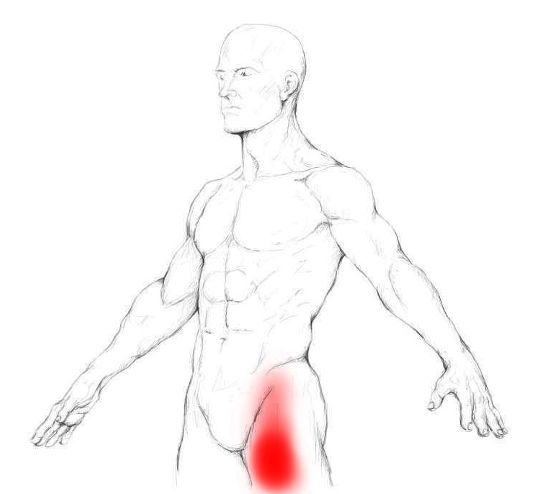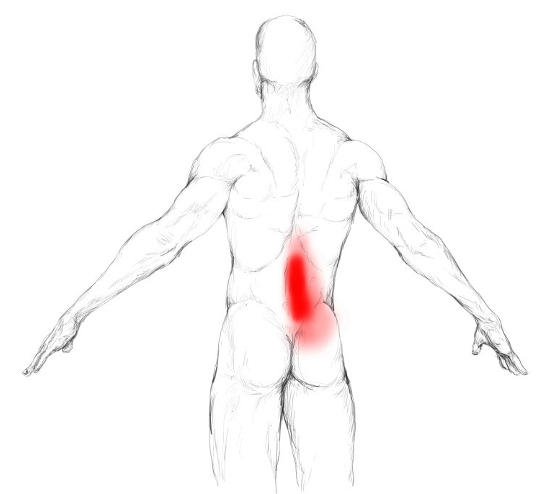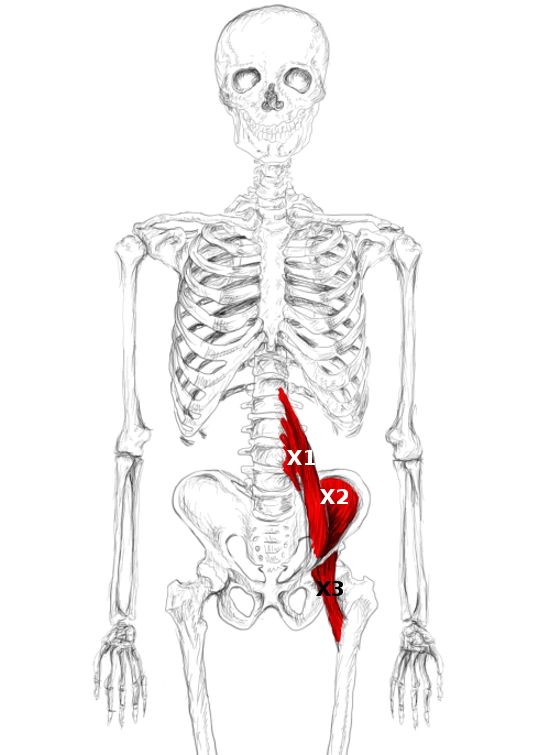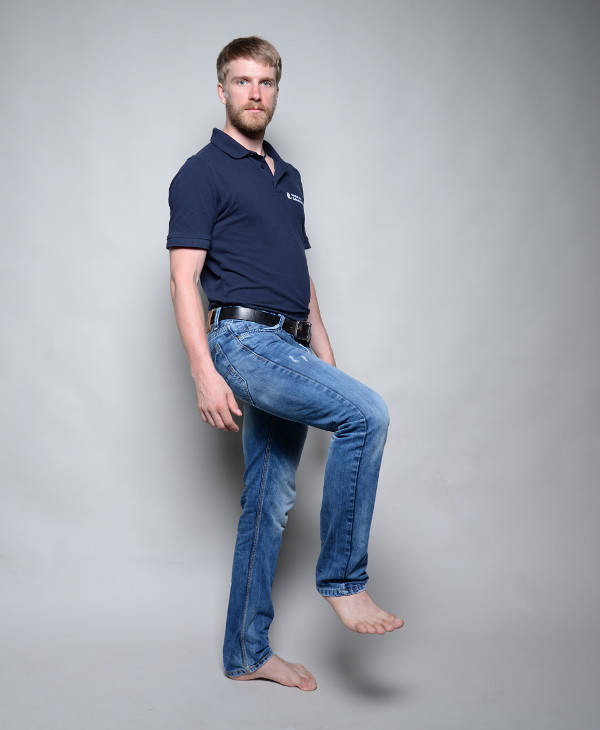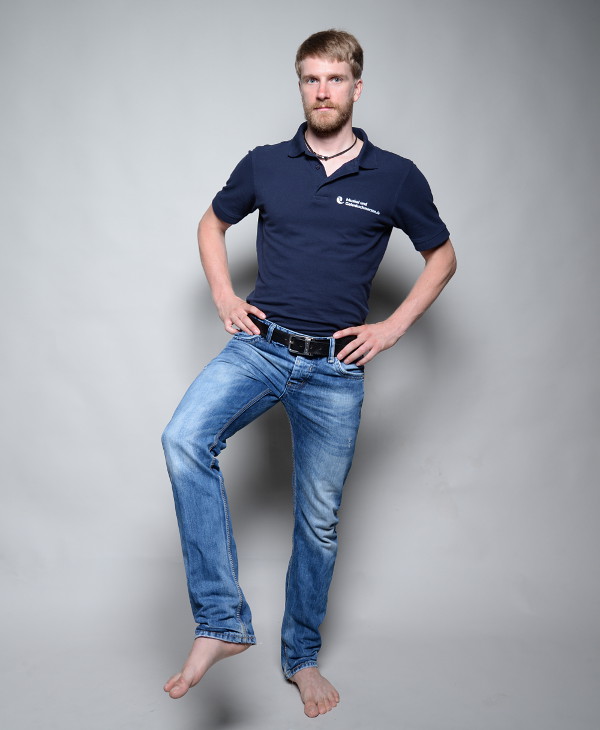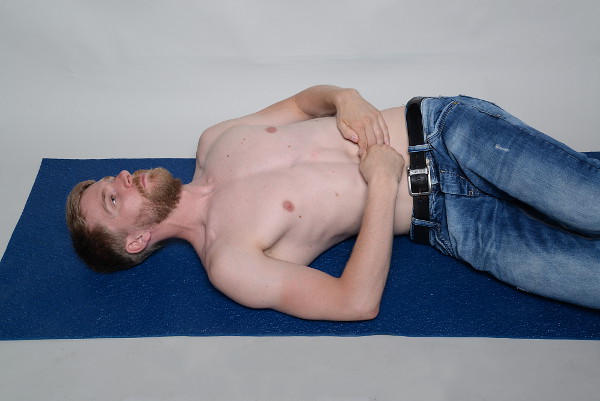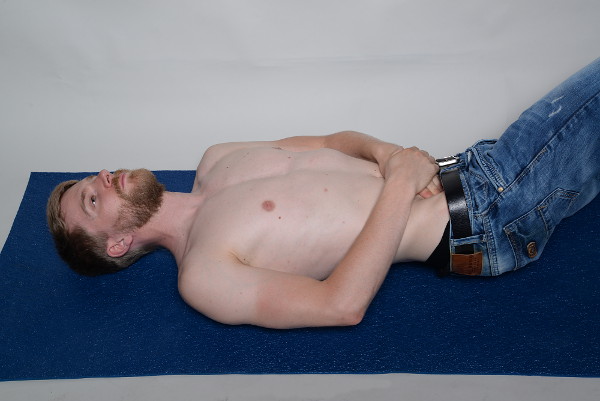6. Self-Massage of the Iliopsoas Muscle
For the massage, you will use the finger-technique.
- You are basically getting into the same position that you used the palpation.
- As soon as you found it, start searching for tender spots.
- When you encounter one, stay in this area and massage it with maximal 15 slow and very short strokes.
- Focus your massage only on the painful spot. Afterwards, move on to the next tender location or the next muscle on your to do list.
For the massage you can use your fingertips and support them with your other hand, or you use your hands “back to back”. I personally use my hands “back-to-back” when massaging the psoas major and my supported fingertips when working my iliacus.
The tenderest and most painful spots on the iliopsoas muscle, and thus the ones to focus on, you are likely to encounter right next to your bellybutton, on the lower third and the outside of the front side of your pelvis, and last but not least down on the muscle short before the it merges into its tendon.
Also see the muscle picture for the localization of these points.
Note: When you are massaging the lower part of your iliopsoas muscle, make sure to double check if you are on it by flexing slightly your hip – pulling the knee towards the chest –.
You should then feel the tendon or the muscle contracting.
If you don’t, you are not on the muscle and should make sure to get back on track. Usually, you do not need to massage this area because massage of the upper part of iliopsoas muscle relieves the tension on its lower part.
Still, you might feel different and need to work on that area.


